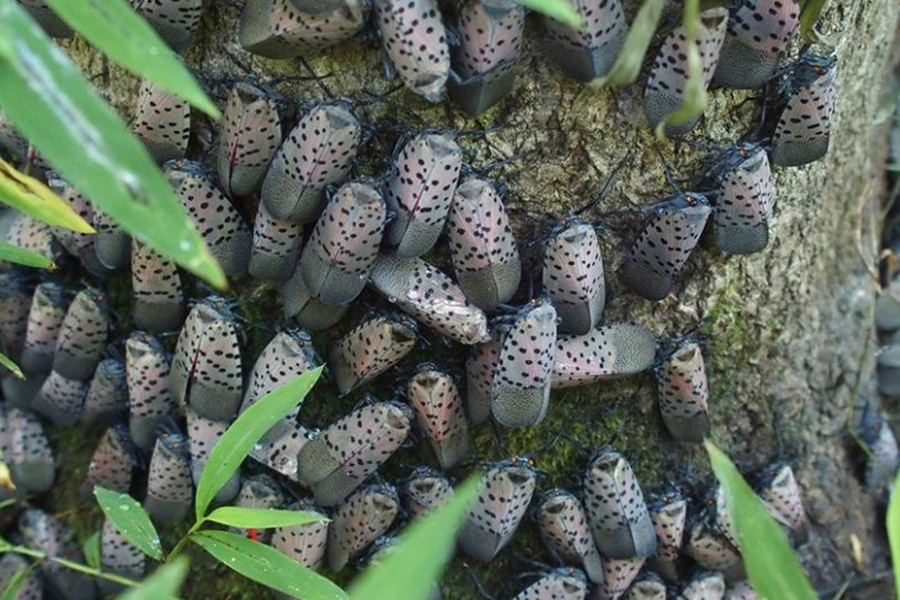By: Sydney Richter

The pesky Spotted Lanternfly is back, with an appetite for destruction. Why should you care? The spotted lanternfly is a huge nuisance, sucking sap from stems and trunks of plants, attracting bees and wasps, and causing the growth of sooty mold and fungi. Spotted Lanternfly impact our quality of life outdoors and they are back in full force. If you stumble across a Spotted Lanternfly egg mass or in its nymph or instar stage, be sure to give us a call.
Spotted Lanternfly Damage
34 counties in Pennsylvania are currently under quarantine to stop the spread of this pest, and the chances of their arrival on your property are high. As published in The Bucks County Herald by author Freda R. Savana, a 2021 U.S. Agricultural Department map shows Pennsylvania and New Jersey are “inundated” with this destructive insect, according to a biology professor at DelVal University.
The SLF has huge implications beyond your backyard. They can potentially drain Pennsylvania’s economy of $324 million annually and cause the loss of around 2,800 jobs, according to a study carried out by Penn State’s College of Agricultural Sciences. Additionally, Penn State estimated the damage on Pennsylvania agriculture to reach $42.6 million statewide. In the worst-case scenario, it could cause annual agricultural losses to hit $99.1 million and affect PA’s forest product industry by $236.5 million statewide.
…but how?
The spotted lanternfly is about the size of a fingernail at its current stage. They will continue to grow into the familiar spotted pest we despise.
The SLF feed on at least 70 varieties of trees, as well as to vines and shrubs, fruit trees, hops, grapevines, and hardwoods. Natural hitchhikers, the pest easily spreads to new locations if their eggs are accidentally transported.
To feed on plant sap, SLFs pierce bark and stems, potentially infecting or killing plants and trees. They excrete sugary honeydew as they feed, which attracts hornets, wasps, and ants, exacerbating the nuisance. A black sooty mold grows on the honeydew, which reduces the amount of sunlight reaching your plants and impacts their health.
The preferred host for SLF is the Tree of Heaven, but they also feed on a variety of species of plants vital to our ecosystem and economy.
The bright side? SLFs do not bite or sting humans, so do not fear if you’ve discovered them on your property.
What can you do about Spotted Lanternflies?

Stay on the lookout for egg masses that could be on your trees, rocks, or even your car or on the side of your building. You can scrape egg masses and place them in a container of rubbing alcohol. Be sure to thoroughly inspect firewood and yard debris before transport and inspect your car and other surfaces for egg masses. Remain mindful of these hitchhikers if you’re traveling.
We highly advise against any DIY or home remedies to eradicate this pest. Sticky bands are a common method used by homeowners that are not an effective approach. Any homemade pesticides, sprays, or bands can be harmful to your environment and kill off good insects and even small birds and mammals.
If you’ve identified a Spotted Lanternfly at any stage on your property, follow USDA guidelines and kill it on sight. The give us a call, we are here to help!

